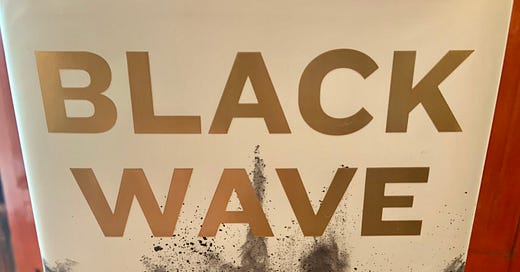Understanding the Middle East
An incredibly well written book sheds light on the conflicts we read about everyday
One of my goals with this newsletter is to highlight some of the things I read, which is pretty much everything, even fiction occasionally. Now, I am not going to bore you with all my reading, but some books really move the needle and deserve attention. I decided to follow the excitement on Twitter about Kim Ghattas’ Black Wave, and here are some quick notes.
It is now ten years since the Arab Spring and there is frankly nothing to celebrate. Endless wars, civilian deaths, torture, assassinations, refugees, chemical weapons and nuclear threats, nothing positive has emerged out of those hopeful days of 2011. And come to think of it, nothing even remotely positive came out of Iran’s revolution this month exactly forty-two years ago. The conflicts and power games that define the Middle East are intricate and often hard to understand, also for me as I have been viewing the region through the prism of the Israeli-Arab conflict most of the time. Kim Ghattas, a Lebanese journalist living in the US has written an amazing book - really, it reads like a thriller - about the last four decades and explains how religion and in particular the Sunni-Shia conflict has defined the era of bloodshed and relentless repression.
The books takes 1979, with the Iranian Revolution, the Soviet invasion of Afghanistan and a fundamentalist muslim attack on the Holy Mosque in Mecca, as the starting point. It also dissects the dynamics behind each event, For instance, the revolution in Iran was a joint effort of mullahs and fairly liberal leftists and the latter group was very quickly dispatched by the ruthless religious zealots who have been in control ever since. Pick your partners carefully. This gives you a good idea of how events and their disastrous outcomes were set in motion. More in particular, while the focus is on Iran and Saudi Arabia as the two Muslim superpowers, the story follows how these two dominant players influenced and deeply disrupted Syria, Lebanon, Pakistan, Egypt, Iraq and Yemen. The writer lets each of the countries revolve around certain personalities who got caught up in the maelstrom of events and that makes the book quite impactful. A great example is Masih Alinejad who is a relentless champion for the struggle of women in Iran.
With this book you can organize every event in the Middle East in a certain context that makes it a lot easier to follow all the news from that region. Recommended.



